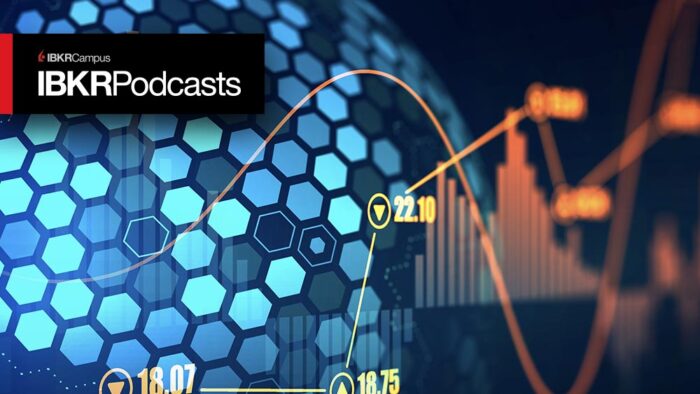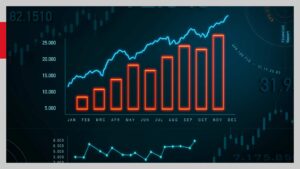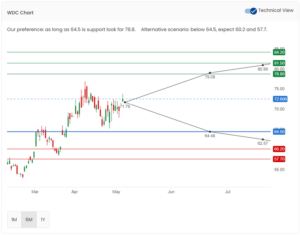Old habits are hard to break, which is why the market is bouncing back from yesterday’s big reversal in the afternoon and buying on that weakness. True to habitual form, too, the buying efforts are concentrated on the mega-cap stocks, which is giving a nice boost to the equity futures market.
Currently, the S&P 500 futures are up 32 points and are trading 0.8% above fair value, the Nasdaq 100 futures are up 176 points and are trading 1.1% above fair value, and the Dow Jones Industrial Average futures are up 170 points and are trading 0.5% above fair value.
A ton of earnings news has hit the wires since yesterday’s close.
Dow component Intel (INTC) is a headliner, having topped Q2 expectations and providing a better-than-expected Q3 outlook. It is up 6.3% in pre-market trading. Fellow Dow component Procter & Gamble (PG) is trading higher, up 1.6%, after posting better-than-expected results and guiding its FY24 expectations in-line with analysts’ consensus estimates.
Exxon (XOM) and Chevron (CVX) are also headliners this morning given their size. Both oil giants came up shy of Q2 earnings estimates, yet that hasn’t unnerved investors to any great degree. CVX is down just 0.2% in pre-market action and XOM is down 0.6%.
Other luminaries reporting results and being met with mixed reactions are Ford (F), Mondelez (MDLZ), Roku (ROKU), Colgate-Palmolive (CL), KLA-Tencor (KLAC), T-Mobile (TMUS), Newell Brands (NWL), U.S. Steel (X), and Live Nation (LYV).
For the full rundown of earnings results, be sure to visit Briefing.com’s Earnings Results page found under the Calendars tab.
Shifting gears to other important news items, there is also some noteworthy central bank news and economic data this morning.
The Bank of Japan (BOJ) excited the masses overnight with a surprise decision to tweak its yield curve control policy. The bank left its policy rates unchanged, however, as expected. There was speculation yesterday that the BOJ might discuss changes to the yield curve control policy. That got the yen moving and contributed to yesterday’s selling in the stock market and Treasury market, piquing some worries that there could be an effort to unwind some yen-based carry trades that have been a support factor for U.S. asset prices.
The tweak heard around the world was a decision to allow “greater flexibility” in conducting yield curve control. The BOJ still has a 0.5% target for the 10-yr Japanese government bond, although it said it will offer to purchase 10-yr JGBs at 1.0% every business day through fixed-rate purchase operations.
Some think this subtle shift is the start of a transition away from the bank’s ultra-accommodative policy. The BOJ downplayed that assertion; nonetheless, it is something that, on the margin, could provide some needed support to the yen and lessen some carry-trade activity.
Another shift drawing attention this morning is the downshift in PCE price inflation and employment costs. That was revealed in the June Personal Income and Spending Report and the Q2 Employment Cost Index.
Briefly, personal income increased 0.3% month-over-month in June (Briefing.com consensus 0.5%) following an upwardly revised 0.5% increase (from 0.4%) in May. Personal spending increased 0.5% month-over-month (Briefing.com consensus 0.3%) following an upwardly revised 0.2% increase (from 0.1%) in May. The PCE Price Index was up 0.2% (Briefing.com consensus 0.2%) and the core-PCE Price Index, which excludes food and energy, was also up 0.2%, as expected.
The key takeaway from the report was the combination of solid spending, evidenced by a 0.4% increase in real personal spending, and ongoing disinflation, evidenced by the 3.0% year-over-year increase in the PCE Price Index, which was down from 3.8% in May, and the 4.1% year-over-year increase in the core-PCE Price Index, which was down from 4.6% in May.
The core-PCE Price Index is still too high in relation to the Fed’s 2.0% target, yet the Fed is bound to take some solace from the recognition that it continues to move in the right direction.
The same will be said for the Q2 Employment Cost Index, which showed compensation costs for civilian workers increasing 1.0% (Briefing.com consensus 1.1%), seasonally adjusted, for the three-month period ending in June 2023 versus a 1.2% increase for the the three-month period ending in March 2023.
The key takeaway from the report is that it featured a deceleration in employment costs, which should be comforting for the market and the Fed.
The 2-yr note yield is down three basis points to 4.89% and the 10-yr note yield is down four basis points to 3.97%.
—
Originally Posted July 28, 2023 – See market dip, buy market dip
Disclosure: Interactive Brokers
Information posted on IBKR Campus that is provided by third-parties does NOT constitute a recommendation that you should contract for the services of that third party. Third-party participants who contribute to IBKR Campus are independent of Interactive Brokers and Interactive Brokers does not make any representations or warranties concerning the services offered, their past or future performance, or the accuracy of the information provided by the third party. Past performance is no guarantee of future results.
This material is from Briefing.com and is being posted with its permission. The views expressed in this material are solely those of the author and/or Briefing.com and Interactive Brokers is not endorsing or recommending any investment or trading discussed in the material. This material is not and should not be construed as an offer to buy or sell any security. It should not be construed as research or investment advice or a recommendation to buy, sell or hold any security or commodity. This material does not and is not intended to take into account the particular financial conditions, investment objectives or requirements of individual customers. Before acting on this material, you should consider whether it is suitable for your particular circumstances and, as necessary, seek professional advice.



























Join The Conversation
If you have a general question, it may already be covered in our FAQs. If you have an account-specific question or concern, please reach out to Client Services.